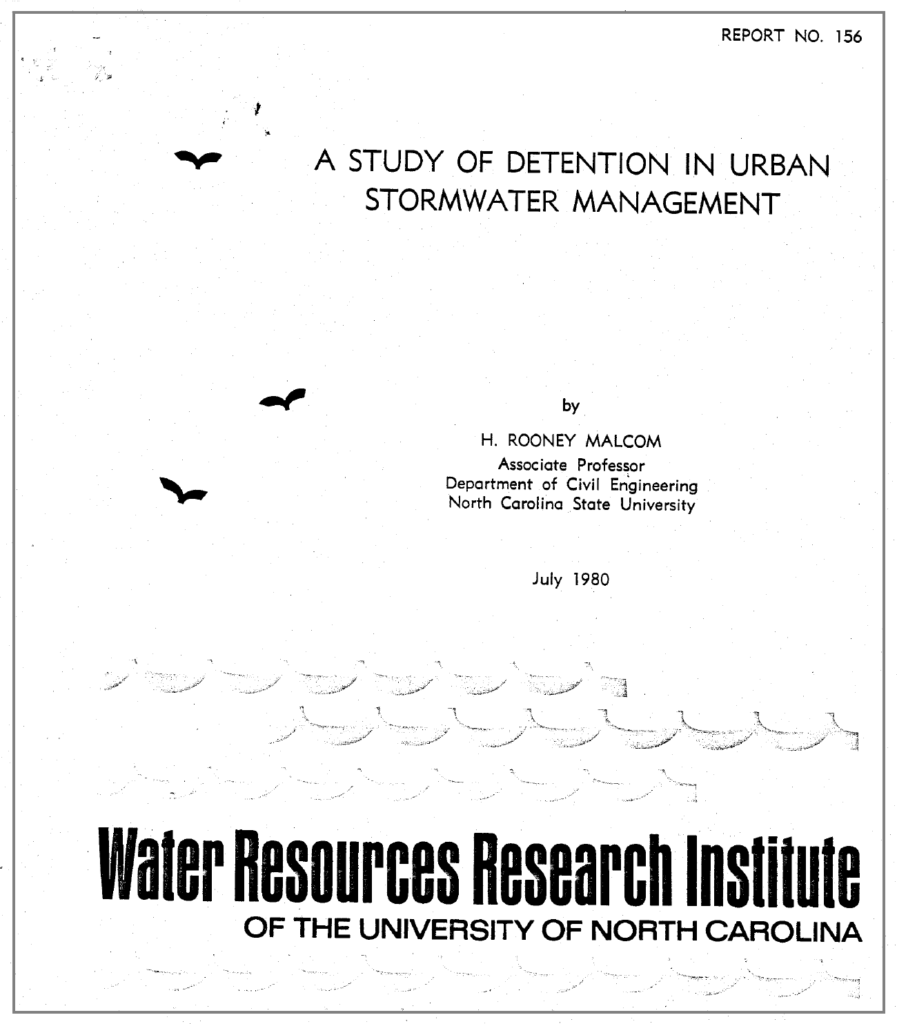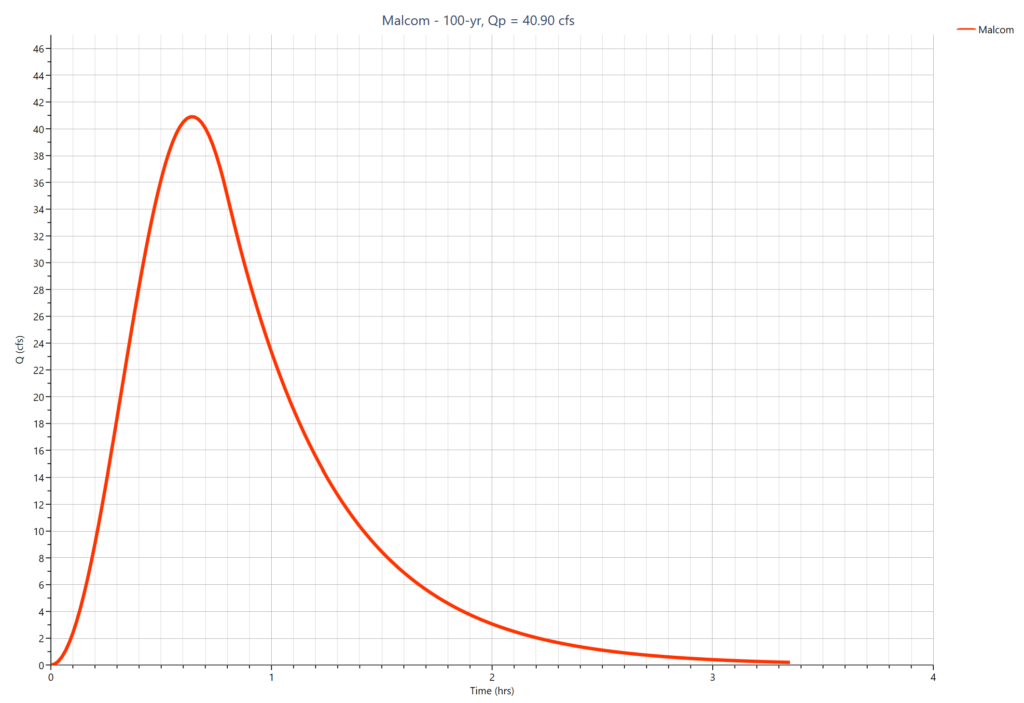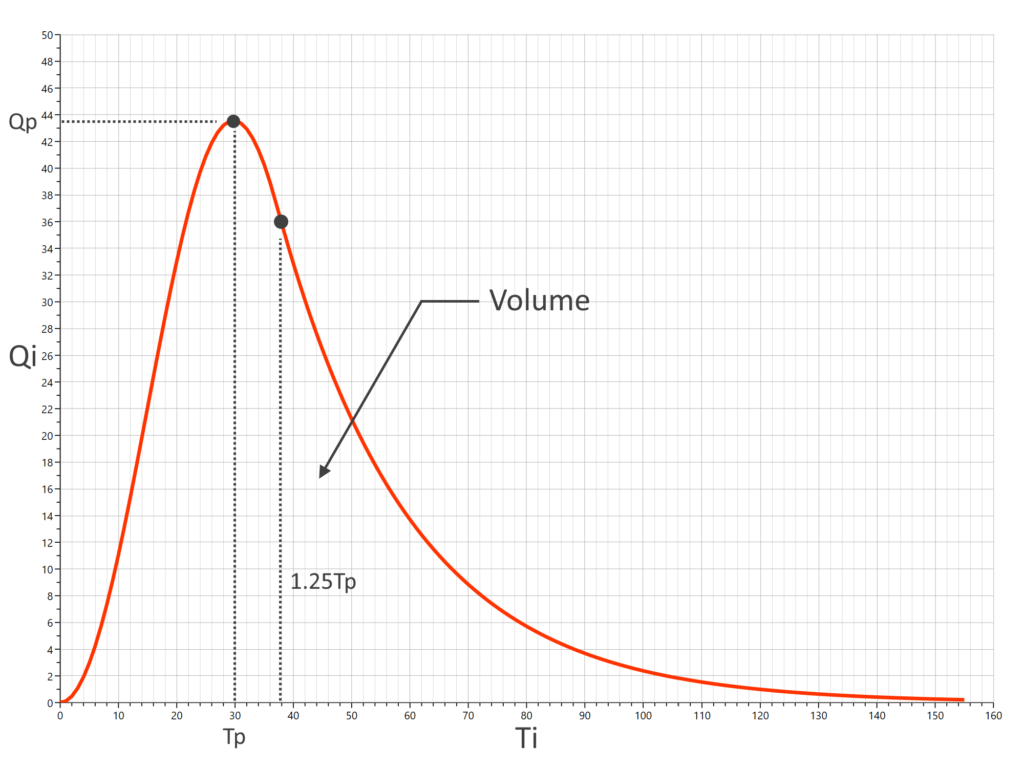Ever heard of the Malcom Method?
I hadn’t either, until a few years ago when a loyal Hydrology Studio user reached out with a request. They needed support for this method because a drainage authority in East Texas required it for detention pond submittals. Naturally, this user was working in that region.
Curious, I asked for details. Turns out, it starts with the familiar Rational Method but takes a twist, using some pretty unconventional equations to shape the hydrograph—resulting in more volume. My first thought was, “Here we go again… another cockamamie hydrograph procedure to deal with.” As if we didn’t already have enough methods, i.e., Modified Rational, DeKalb, Ascending and Receding Limb Factors, etc. I automatically said no because I didn’t like it. Period. End of story.
Or so I thought.
Fast forward to a few months ago—same topic, different user. This time, I took a closer look to find out why I didn’t like the Malcom method.
And to my surprise…
I liked it.
I liked it a lot.
Malcom Method and the Mini Cooper
The Malcom method originated from a watershed research study led by H. Rooney Malcom circa 1980. Rooney was an associate professor at the Department of Civil Engineering, North Carolina Stae University at the time. Rooney’s research aimed to explore stormwater detention as a strategy for mitigating urban streambank erosion and flooding, focusing on identifying the optimal design storm for stormwater detention programs.
I read this study. It was scanned onto a digital format that resembles one of those decades-old, Xerox-copied 100-times IDF curves, from the 1970’s.

In that study, Rooney covered a lot of stormwater territory… impulse control, sedement control, streambank erosion, things like that. One interesting take-away was that hydrograph volume played a larger role in detention pond design (channel erosion) than we thought. But the most significant outcome for us civil engineers however, was the concoction of a runoff hydrograph that integrates both the Rational method and the NRCS method.
It brings to mind BMW’s acquisition of the Rover Group in 1994. The Rover brand included the Mini Cooper among others. After sifting through the newly acquired Rover assets, BMW sold off everything… but kept the much-beloved Mini Cooper. Malcom is our Mini Cooper. Great watershed study, but we’ll take the Malcom method. They can keep what’s left.

A Better Hydrograph for Urban Watersheds
Let’s be honest, our field has been messing around with the Rational method for ages, attempting to make it deliver more volume in a reasonable manner. And what do we have to show for all this work? The Modified Rational method. Seriously?
The standard Rational method hydrograph is too simplistic. The Modified rational doesn’t even look natural and confuses most engineers. Then we have the NRCS method which typically slogs along from time zero to 11 hours with barely a pulse. Then adds a tall spike for an hour or two, then continues to the bitter 24-hour end, with basically no pulse. Such a waste of time.
Enter the Malcom method hydrograph. It’s everything those other methods aren’t but ironically employs those methods. Take a look at the sample Malcom hydrograph below. It’s what a natural runoff hydrograph should look like.

The Malcom method combines the advantages of both approaches, offering the straightforward Peak Q from the Rational method alongside the realistic volume provided by the NRCS method.

The Q peak is computed using the Rational equation, Q = CiA. Volume is computed using the NRCS Curve Number method. The Time to Peak does not coincide with Tc but rather it’s a function of the total volume. The entire shape is derived from the NRCS curvilinear Unit Hydrograph. The result is a beautiful, realistic hydrograph that offers the best of both worlds.
To learn more about the inputs and computational method, please visit this article.
The Hydrograph That Makes Sense
The Malcom method is an excellent choice for use in today’s urban hydrology environment where the watersheds are small and volume concerns are growing larger. It fits that bill better than the Rational or NRCS by themselves.
I really have to give a shoutout to Mr. Malcom for this amazing piece. It looks like he relied on good old common sense while putting it together. Common sense is key in this field. So, if you’re involved in this industry—whether you’re a consultant, a reviewer, or a drainage policy maker—I highly recommend you check it out. Trust me, you’ll be happy you did.